
DIY Garden Trellis Ideas to Elevate Your Outdoor Space
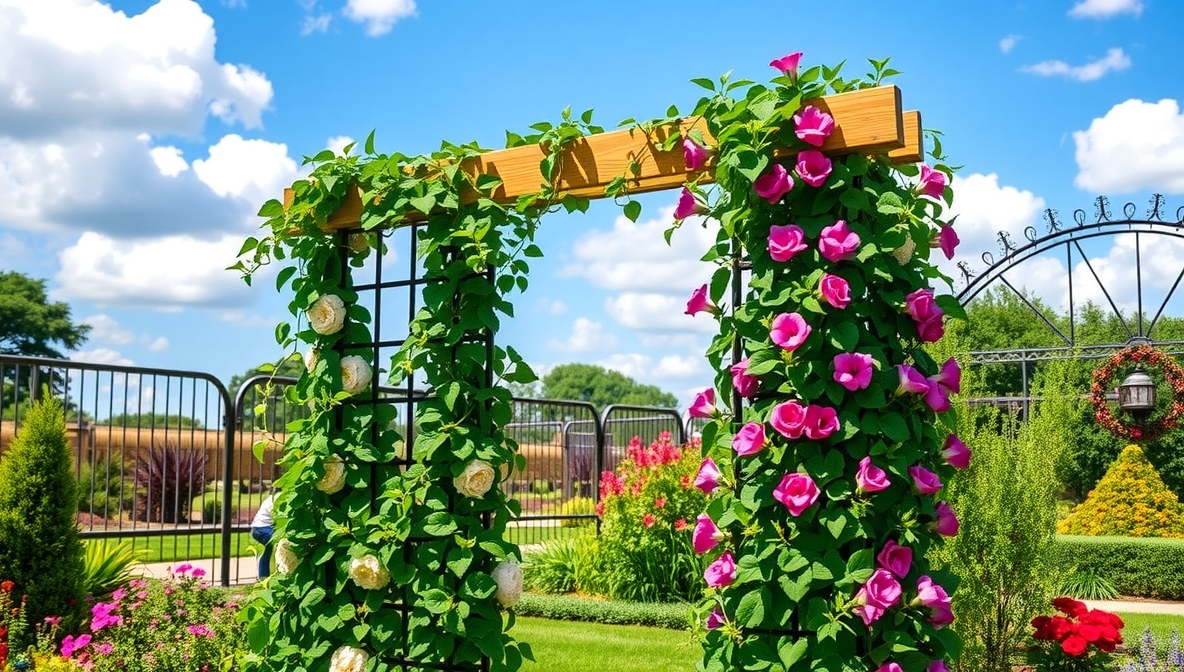
A garden thrives on structure, beauty, and functionality, and a trellis delivers all three in one simple feature. Trellises guide climbing plants upward, save precious ground space, and add striking vertical interest to your yard. A plain wall, a bare fence, or an empty corner instantly feels alive once a trellis stands there, draped in greenery or bright blooms.
Gardeners love trellises not only for their practicality but also for the creativity they invite—every design can reflect personal style, from rustic wooden frames to modern metal grids. Building a trellis with your own hands allows you to experiment with shapes, textures, and materials without relying on costly store-bought versions.
A simple set of poles, an old ladder, or even repurposed branches can become the centerpiece of a thriving vertical garden. Trellises prove that small projects bring big rewards, offering charm, shade, and support for plants while making your outdoor space feel fresh and inviting.
DIY Garden Trellis Ideas
Gardens look beautiful with plants climbing tall or spreading wide. A trellis gives support and style to your plants. It keeps them off the ground and adds shape to the garden. Many people think trellises are hard to make. They are not. With simple materials and easy steps, anyone can make a DIY garden trellis. Here are ten ideas to inspire your garden.
1. Wooden Lattice Trellis
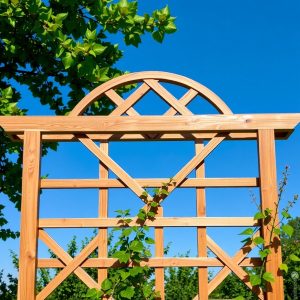
Wooden lattice trellises are classic and work for many plants. Use thin wooden strips to make a crisscross pattern. Secure the strips with nails or screws. Paint or varnish wood to make it last longer. Place it behind climbing roses or vines. It looks neat and gives strong support. You can make it any size you like. Small lattices suit balcony gardens. Big lattices fit open spaces.
2. Bamboo Trellis
Bamboo is strong and natural. Tie bamboo sticks together with twine or wire. Make a triangle, square, or fan shape. Bamboo trellises suit peas, beans, and morning glories. They look light and blend well with greenery. Bamboo is cheap and easy to find. You can place it directly in soil or in a pot. It also resists weather better than some woods.
3. A-Frame Trellis
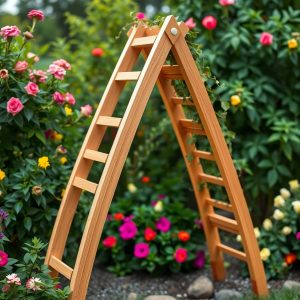
An A-frame trellis stands alone and is easy to move. Place two wooden frames in a triangle and join at the top. Add crossbars for extra support. This design works well for cucumbers and tomatoes. A-frames save space because plants grow up, not out. You can fold them for winter storage. The shape lets sunlight reach all sides of plants.
4. Ladder Trellis
Old ladders make a simple trellis. Place a wooden ladder upright in the garden. Lean it against a wall or let it stand alone. Climbing plants like morning glories, sweet peas, and ivy can wrap around the rungs. Paint the ladder to protect wood from rain. Ladders bring a rustic charm to gardens. They also need little building skill.
5. Teepee Trellis
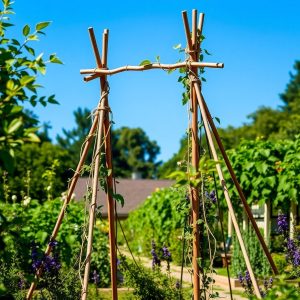
A teepee trellis uses three or more long sticks. Tie them at the top with twine. Spread the bases in a circle. Plant beans or peas inside the teepee. The sticks give plants support as they climb. This trellis works well in small gardens. It is easy to move and looks interesting. You can add more sticks for taller plants.
6. Pallet Trellis
Wooden pallets can turn into an easy garden trellis. Stand the pallet against a wall or fence. Plants grow through the spaces in the wood. Pallets suit vines, herbs, or small vegetables. Sand rough edges and paint for safety and beauty. This method reuses old materials. It is eco-friendly and very cheap.
7. Wire Mesh Trellis
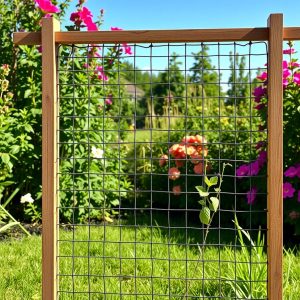
Wire mesh makes a modern-looking trellis. Stretch the mesh over a frame or attach to a wall. Plants with tendrils, like cucumbers or peas, climb easily. Wire mesh trellises are strong and long-lasting. They need less wood and take less space than big wooden trellises. They also help keep plants organized.
8. Branch Trellis
Garden branches can become a natural trellis. Collect strong branches and tie them together with twine. Make shapes like squares, rectangles, or teepees. Branch trellises blend with the garden. They work well for beans, sweet peas, or flowers. Branches give a rustic and wild look. This trellis type is cheap and sustainable.
9. Obelisk Trellis
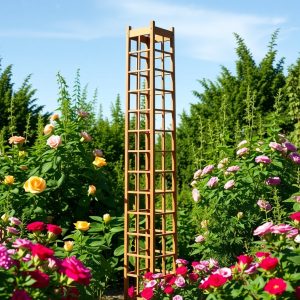
Obelisks are tall and pointed trellises. They suit small gardens or pots. Make them by connecting four sticks or wooden rods at the top. Add crossbars for stability. Climbing roses or morning glories grow well on obelisks. They give a decorative vertical element. Obelisks save garden space and look elegant.
10. Hanging Trellis
Hanging trellises save ground space. Use ropes, strings, or wires from a balcony or frame. Train plants to climb upward. This works for tomatoes, beans, or small flowers. Hanging trellises make a vertical garden. They are good for small patios. Plants get air and sunlight. It also reduces pests because leaves do not touch soil.
FAQs
Q1: Which plants need a trellis?
Vines, climbing vegetables, and flowering plants need support. Examples are peas, beans, cucumbers, morning glories, and roses.
Q2: What material is best for a DIY trellis?
Wood, bamboo, metal, and wire are common. Wood is easy to shape. Bamboo is natural and light. Wire mesh lasts long. Choose what fits your garden style.
Q3: How tall should a trellis be?
Height depends on plants. Small vegetables need 3-4 feet. Climbing flowers or large vines need 6-8 feet or more. Make sure it is stable for the weight.
Q4: Can trellises be used in pots?
Yes. Small trellises like obelisks, bamboo sticks, or hanging trellises work well in pots. Make sure the pot is heavy enough to hold the structure.
Q5: How to maintain a trellis?
Check for loose nails or ties. Paint or varnish wood to prevent rot. Clean metal or wire from rust. Replace weak parts each season. Proper care makes a trellis last years.
Conclusion
Trellises make gardens organized and beautiful. They help plants grow tall, healthy, and strong. DIY trellises are affordable and fun to make. Wooden lattice, bamboo, A-frame, ladder, teepee, pallet, wire mesh, branch, obelisk, and hanging trellises suit different gardens. Pick the one that matches your space, plants, and style. Every garden can have a trellis that supports plants and adds charm.
